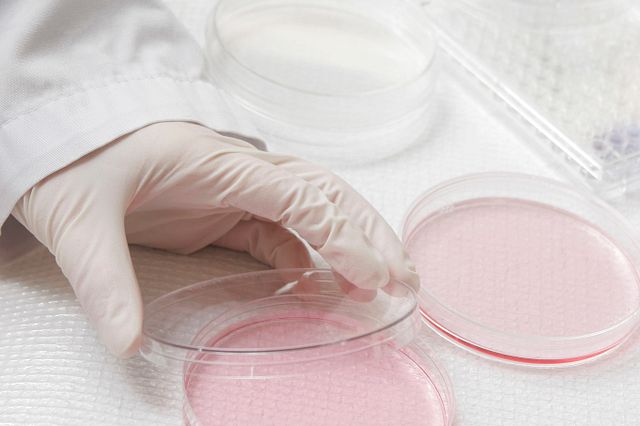ISO 10993-11 Systemic Toxicity Testing of Medical Devices
The ISO 10993-11 standard is a critical component in the biocompatibility testing of medical devices, particularly those that are designed to be implanted or used for long-term exposure within the body. This internationally recognized guideline provides stringent protocols for assessing systemic toxicity, ensuring that materials and devices do not cause adverse reactions when introduced into the human body. The test evaluates potential risks associated with the introduction of a device into the circulatory system, focusing on the cumulative effects over time.
Understanding the significance of this testing is paramount in the medical industry, where patient safety remains paramount. Compliance with ISO 10993-11 ensures that devices meet global regulatory requirements and can be safely introduced to the market. This service supports healthcare providers, R&D teams, quality managers, and compliance officers by providing robust data essential for the approval of new technologies.
The test involves several stages, including the selection of appropriate animal models based on device type and intended use, the preparation of test specimens, administration via intravenous or subcutaneous routes, and detailed monitoring. The testing period can vary depending on the specific requirements but typically spans weeks to months, allowing for comprehensive evaluation.
Accurate documentation is crucial in this process. Laboratories must adhere strictly to ISO 10993-11 guidelines while ensuring that all data collected aligns with regulatory expectations. Reporting should include detailed information about test procedures, results, and conclusions drawn from the analysis. This service ensures compliance with these stringent requirements, offering a comprehensive approach to biocompatibility testing.
The importance of systemic toxicity testing cannot be overstated in the medical field. By identifying potential hazards early in the development process, manufacturers can mitigate risks and enhance patient safety. Compliance with ISO 10993-11 is not just about meeting regulatory standards; it's about setting a benchmark for quality and reliability.
For devices intended to interact directly with bodily fluids or tissues, the results of this testing are particularly critical. They help in validating that the device will perform safely over its expected lifespan without causing harm. The insights gained from these tests contribute significantly to the overall product development lifecycle, ensuring that only safe and effective products reach clinical use.
In summary, ISO 10993-11 is a cornerstone of biocompatibility testing in medical devices. Its rigorous protocols provide essential information on potential systemic toxicity risks, supporting informed decision-making by healthcare professionals and regulatory bodies alike. By adhering to these guidelines, manufacturers can ensure that their products are safe, reliable, and meet the highest standards of quality.
Why It Matters
The ISO 10993-11 standard is pivotal in ensuring patient safety and regulatory compliance for medical devices. Compliance with this standard demonstrates a commitment to producing safe, effective, and reliable products that can be trusted by healthcare providers and patients alike.
By conducting systemic toxicity testing, manufacturers gain valuable insights into the potential risks associated with their devices. This information helps in identifying areas where improvements are needed, ensuring continuous quality improvement throughout the product lifecycle. It also aids in reducing liability risks by preemptively addressing safety concerns.
The results of ISO 10993-11 testing provide critical data that support regulatory approvals and market entry strategies. Regulatory bodies rely heavily on these tests to assess whether devices are safe for use, particularly those intended for long-term or repeated exposure within the body. This service helps streamline this process, making it easier for manufacturers to navigate complex regulatory environments.
Moreover, compliance with ISO 10993-11 fosters trust among healthcare professionals and patients who rely on medical devices for treatment and care. It reinforces the industry's reputation for delivering high-quality products that meet international standards of excellence. This service plays a vital role in maintaining this level of trust and credibility.
Ultimately, the importance of ISO 10993-11 cannot be overstated. Its stringent protocols ensure that medical devices are safe, effective, and reliable, contributing to better patient outcomes and enhanced quality of life.
Applied Standards
| Standard | Description |
|---|---|
| ISO 10993-11:2020 | This standard specifies the procedures for determining the systemic toxicity of materials and articles intended to come into long-term contact with the body. It covers both in vivo and in vitro methods. |
| ASTM F713 | An American Society for Testing and Materials (ASTM) guideline that provides additional support on biocompatibility testing, particularly focusing on the use of animal models. |
The application of these standards ensures that the testing process is both comprehensive and aligned with international best practices. This service leverages these guidelines to provide accurate and reliable systemic toxicity testing results for medical devices.
Scope and Methodology
| Phase | Description |
|---|---|
| Preparation | This phase involves selecting the appropriate animal models based on the device type, preparing test specimens, and determining the appropriate route of administration (intravenous or subcutaneous). |
| Administration | The selected specimens are administered to animals according to specified protocols. The duration of this phase can vary depending on the specific requirements but typically spans weeks to months. |
| Monitoring and Data Collection | Detailed monitoring is conducted throughout the testing period, with data collected on various parameters including physiological responses, organ function, and overall health status. |
| Data Analysis and Reporting | The collected data undergoes rigorous analysis to identify any adverse effects or systemic toxicity risks. The results are then compiled into a comprehensive report detailing the testing process, findings, and conclusions. |
This service ensures that each phase is meticulously executed, adhering strictly to ISO 10993-11 guidelines. By doing so, we provide clients with robust data and insights essential for product development and regulatory compliance.





